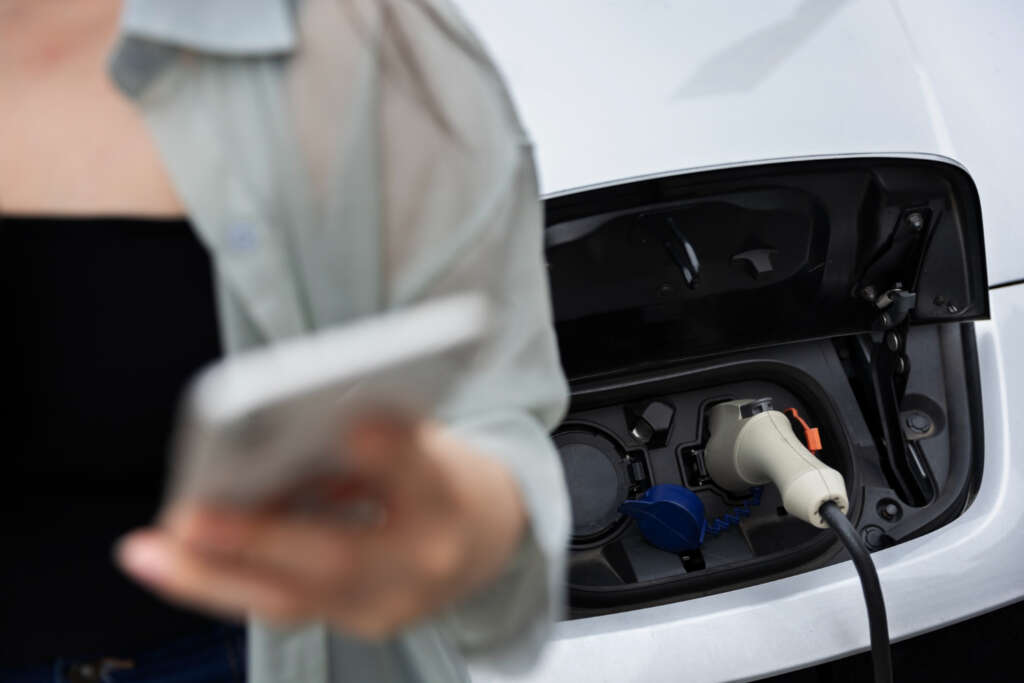
Table of Contents
- 1 Key Takeaways
- 2 Introduction to Electric Vehicle Charging at Home
- 3 Benefits of Installing a Home EV Charger
- 4 Types of Home EV Chargers
- 5 Cost Considerations and Savings
- 6 Installation Tips and Steps
- 7 Safety Tips for Home EV Chargers
- 8 Environmental Impact and Sustainability
- 9 The Future of Home EV Charging Technologies
Key Takeaways
- Electric vehicle (EV) adoption drives the demand for home EV chargers, which ensure ease of charging and foster sustainable practices at home.
- Understanding different types of chargers can lead to significant cost savings through efficient usage and taking advantage of off-peak electricity rates.
- Safety and sustainability are central to the future of EV charger technology, paving the way for future innovations.
Introduction to Electric Vehicle Charging at Home
The electric vehicle (EV) movement has been instrumental in steering us toward a more sustainable future. As EVs become more common, the need for EV charger installation in residential areas has also increased. A home charger provides unparalleled convenience—it allows users to charge overnight while saving trips to public stations, which can sometimes be overcrowded. A personal charging station at home transforms convenience into a sustainable lifestyle choice, aligning individual practices with global sustainability goals.
Benefits of Installing a Home EV Charger
Home EV chargers offer more than time-saving benefits. They provide significant cost efficiency. Public charging might be more costly during peak hours than at home. A home charging station allows EV owners to tap into lower electricity rates available overnight. This flexibility also helps flatten utility load curves and promotes energy efficiency. Furthermore, a home charger can increase the property value, making it an investment rather than an expense. Many homeowners tend to consult an Augusta electrician (or professionals from elsewhere) to ensure that the charger is installed safely and optimized for their home’s electrical capacity.
Types of Home EV Chargers
Knowing the types of chargers that are available for usage at home is essential. Simple to use, Level 1 chargers connect to regular household outlets but take longer to charge, often increasing range by two to five miles per hour. Level 2 chargers, on the other hand, drastically reduce charging times by employing a 240-volt circuit to deliver 10 to 60 miles of range each hour. Because of their intricacy and requirements for electrical inspection, these chargers frequently need to be installed by professionals. The U.S. Department of Energy provides additional information about the advantages and drawbacks of each kind.
Comparing Level 1 and Level 2 Chargers
- Level 1 Charger: This charger offers simplicity and minimum cost, but it has slower charging and is suited for less demanding use cases, such as plug-in hybrids.
- Level 2 Charger: This charger provides fast charging and greater efficiency, making it ideal for daily use with fully electric vehicles. However, an initial setup investment is required.
Cost Considerations and Savings
The upfront costs of home EV chargers can be daunting; equipment and installation by a certified electrician may add up. However, balancing these initial costs against potential savings reveals a different picture. Reducing fuel expenses and capitalizing on renewable energy sources are prime financial advantages. With government incentives and rebates, switching to EVs and residential charging solutions becomes more financially viable, making green technology accessible to a larger population.
Installation Tips and Steps
Installation of a home EV charger requires careful consideration. Here are practical steps to ease the process:
- Assess your household’s electrical system—a consultation with a licensed electrician will clarify if upgrades are needed.
- Ensure the location for charger placement allows for easy EV access, such as your garage or driveway.
- Opt for professional installation to ensure all components meet safety standards and are efficiently wired.
- Regular maintenance checks on your charger’s cables and connectors are crucial for optimal performance and lifespan.
Each step is vital for efficiency, compliance with safety regulations, and prolonging the charger’s durability.
Safety Tips for Home EV Chargers
Maintaining safety standards for electric chargers is paramount. Avoid exposing the equipment to wet conditions, and routinely check for any damage or wear in the cords and connectors. Proper ventilation in the charging area is also crucial to prevent overheating. By diligently following safety guidelines, EV owners can ensure personal safety while extending the life of their charging equipment.
Environmental Impact and Sustainability
The integration of home EV chargers contributes significantly to environmental sustainability. By facilitating the use of renewable energy, these chargers allow users to actively participate in reducing carbon emissions associated with transportation. This transition helps decrease your reliance on fossil fuels. According to the Environmental Protection Agency (EPA), increasing the proportion of electric cars lowers the overall carbon footprint, bringing society closer to meeting climate targets.
The Future of Home EV Charging Technologies
Future EV charging technologies offer wireless charging and smooth interaction with smart home systems to improve convenience and energy management. These advancements will provide users with hands-free charging experiences and a deeper connection to sustainable living, leading to significant global environmental improvements. By being aware of charger kinds, installation processes, and advantages, consumers may make educated judgments and support a movement to lessen environmental effects and advance global sustainability initiatives.


